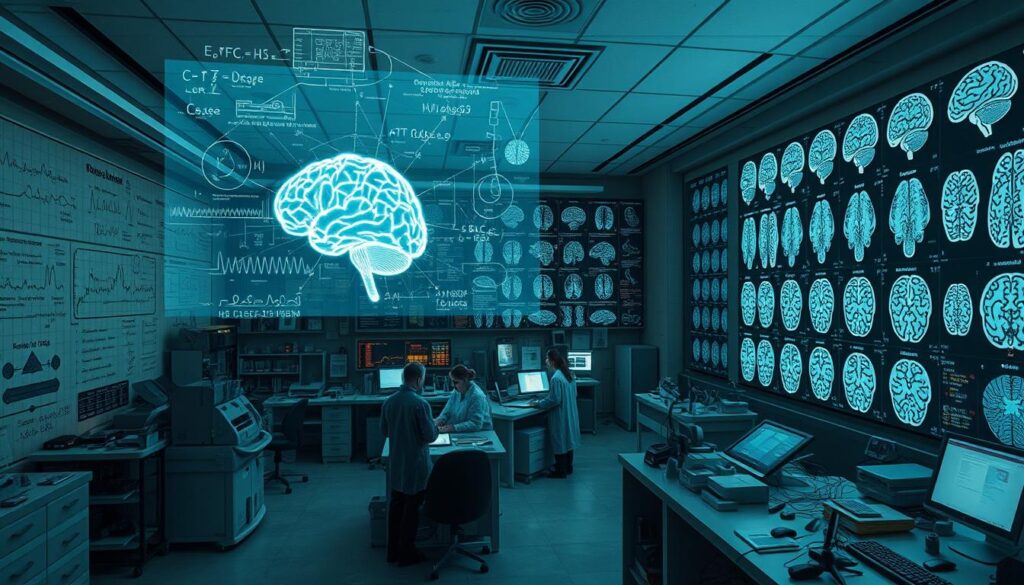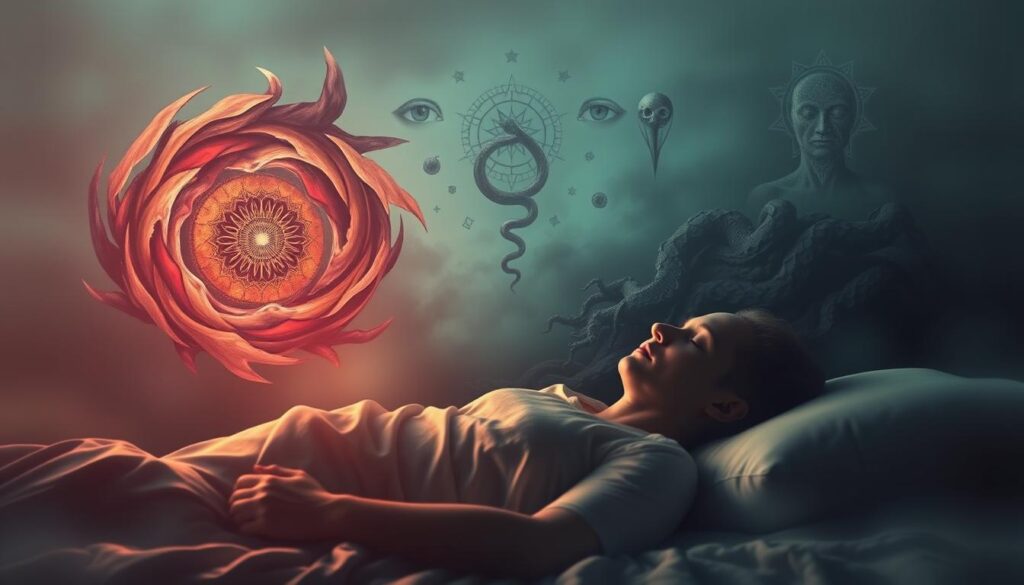Have you ever had a dream that seemed to predict a future event? Many people claim to experience dreams that offer glimpses of what’s to come. These visions, often called precognitive dreams, have fascinated humanity for centuries. From ancient biblical stories, like Joseph’s prophetic dreams, to modern-day anecdotes, the phenomenon spans cultures and time.
Precognitive dreams are a topic of debate. Some believe they are genuine premonitions, while others argue they are coincidences or the result of cognitive biases. Parapsychology researchers and mainstream scientists have studied these dreams, but opinions remain divided. Whether you’re a skeptic or a believer, the idea of dreaming about the future is undeniably intriguing.
This article explores examples of precognitive dreams, their possible causes, and methods to stop them if they become unsettling. We’ll also dive into historical anecdotes, scientific viewpoints, and cultural impacts. By the end, you’ll have a clearer understanding of this mysterious phenomenon.
Key Takeaways
- Precognitive dreams are reported across cultures and throughout history.
- They are often linked to significant events or personal experiences.
- Scientific and paranormal perspectives offer different explanations.
- Stress and emotional factors may increase the likelihood of these dreams.
- Methods exist to reduce or stop precognitive dreams if they cause discomfort.
Exploring Precognition: Definition and Phenomenon
The ability to sense future events has intrigued humans for centuries. This phenomenon, often referred to as precognition, comes from the Latin words prae (before) and cognitio (knowledge). It describes the experience of knowing something before it happens, often through dreams or visions.
Unlike vague premonitions, precognitive experiences are typically detailed and specific. They often involve a strong sense of impending danger or significant events. For example, someone might dream about a car accident before it occurs or feel an unexplainable warning about a loved one’s safety.

Origins and Terminology
Historically, many cultures interpreted visions and dreams as messages from a higher power. Ancient civilizations believed these experiences were divine warnings or guidance. In modern times, parapsychology has studied precognition as a natural human ability rather than a supernatural gift.
Related terms include prophetic dreams, prescience, and foreknowledge. Prophetic dreams are often seen as direct messages about the future, while prescience refers to the general ability to foresee events. Foreknowledge, on the other hand, emphasizes the awareness of future details.
Here’s a quick comparison of these terms:
| Term | Definition |
|---|---|
| Precognitive Dreams | Detailed dreams that predict future events. |
| Premonitions | Vague feelings or intuitions about the future. |
| Prophetic Dreams | Dreams believed to be messages from a divine source. |
| Prescience | The general ability to foresee future events. |
Many reported cases of precognition involve a sense of urgency or danger. For instance, individuals often describe feeling compelled to act on their visions to prevent harm. This emotional intensity sets precognitive experiences apart from ordinary dreams.
Whether you’re a skeptic or a believer, the idea of foreseeing the future is fascinating. To learn more about how these experiences are interpreted across cultures, check out this detailed exploration.
Examples of Precognitive Dreams and Visions
Many individuals have shared stories of dreams that later came true. These accounts, often detailed and specific, have been documented across cultures and time. From personal anecdotes to scientific experiments, the phenomenon continues to captivate minds.

Real-life Anecdotes
One of the most famous examples is the Aberfan disaster in 1966. After a tragic landslide killed 144 people, 76 individuals claimed to have had dreams or premonitions about the event. Of these, 60 were considered credible enough for further investigation.
J.W. Dunne, a British aeronautical engineer, conducted experiments on precognitive dreams. He documented that 10% of his dreams appeared to predict future events. His work remains a cornerstone in the study of this phenomenon.
Abraham Lincoln reportedly had a prophetic dream shortly before his assassination. He saw a corpse laid out in the East Room of the White House, which many interpret as a foreshadowing of his death.
Artistic Representations
Art has long been a medium to explore the idea of foreseeing the future. Gaetano Gandolfi’s painting “Joseph’s Dream” depicts the biblical story of Joseph interpreting dreams. This classic work highlights the cultural fascination with prophetic visions.
In literature, authors like C.G. Jung have shared their own experiences. Jung documented a vision of a catastrophic flood two weeks before World War I began. His writings blend personal experience with broader philosophical insights.
These artistic and anecdotal examples show how the concept of precognitive dreams transcends time and medium. Whether through art, science, or personal stories, the phenomenon remains a compelling topic of discussion.
Historical Perspectives on Precognitive Experiences
Throughout history, dreams have been seen as windows into the future. From ancient civilizations to modern times, people have interpreted these visions as omens, divine messages, or glimpses of what’s to come. This section explores how beliefs in precognitive experiences have evolved over the years.

Antiquity and Early Beliefs
In ancient cultures, dreams were often considered sacred. The Egyptians and Greeks believed dreams were messages from the gods. Aristotle wrote about dreams as a way to predict future events. These early interpretations laid the foundation for how the world viewed this phenomenon.
For example, in ancient Mesopotamia, dream interpreters played a key role in society. They advised kings and leaders based on their visions. This shows how dreams influenced life decisions and shaped historical outcomes.
Medieval to Modern Views
During the medieval period, dreams were linked to religious prophecies. Many believed they were warnings from divine forces. The Renaissance brought a shift, with thinkers like Descartes exploring the scientific side of dreams.
In the modern era, the focus has turned to psychology and parapsychology. While some still see dreams as prophetic, others argue they are products of the subconscious mind. This debate continues to shape our understanding of the phenomenon.
Influential Experiments and Research
J.W. Dunne’s work in the early 20th century remains a cornerstone in this field. His experiments showed that some dreams could predict future events. Dunne’s research inspired further studies, including meta-analyses of thousands of trials.
One such analysis, published in 1989, examined 309 studies involving precognition tests. The result was a statistical significance of 30%, suggesting that some experiences might not be mere coincidence. These experiments highlight the ongoing fascination with this phenomenon.
| Era | Key Beliefs |
|---|---|
| Antiquity | Dreams as divine messages. |
| Medieval | Religious prophecies and warnings. |
| Modern | Psychological and scientific exploration. |
From ancient times to the present, dreams have shaped how we see the world. Whether viewed as spiritual or scientific, they remain a fascinating part of human life.
Scientific Explanations and Critical Analysis
Science has long sought to explain the mysterious phenomenon of dreams that seem to predict the future. While some researchers argue these experiences are genuine, others attribute them to cognitive biases or methodological flaws. This section delves into the methodologies, findings, and debates surrounding this intriguing topic.

Methodologies and Research Findings
One of the most cited studies in this field is Daryl Bem’s 2011 research, which claimed to find evidence of precognitive abilities. His experiments involved participants predicting random events, such as the location of hidden images. The results suggested a small but statistically significant effect.
Another notable study is the meta-analysis by Mossbridge et al. (2012, 2014), which examined physiological responses to future stimuli. Their findings revealed a consistent pattern of predictive anticipatory activity (PAA) in participants. The fixed effect size was 0.21, indicating a measurable, though subtle, phenomenon.
Here’s a summary of key research findings:
| Study | Methodology | Key Finding |
|---|---|---|
| Bem (2011) | Forced-choice matching | Small but significant precognitive effect |
| Mossbridge et al. (2012, 2014) | Physiological response analysis | Predictive anticipatory activity (PAA) detected |
| Kiritsis (2014) | Dream documentation over several days | Strong correlations between dreams and waking events |
Debates and Scientific Criticisms
Despite these findings, skepticism remains widespread. Many replication attempts of Bem’s experiments, such as those by Galak et al. (2012), failed to reproduce the results. Critics argue that the evidence is often influenced by cognitive biases or methodological errors.
For example, expectation bias can skew results. As one researcher noted,
“The brain’s response to stimuli is complex, and small effects can be misinterpreted as precognition.”
Additionally, some studies included in meta-analyses were published in conference proceedings rather than peer-reviewed journals. This raises questions about the reliability of the findings. As a result, many scientists remain unconvinced, calling for more rigorous research.
Key criticisms include:
- Lack of reproducibility in independent studies.
- Potential for cognitive biases to influence results.
- Insufficient peer review for some studies.
While the debate continues, the scientific community agrees that extraordinary claims require extraordinary evidence. Until more robust studies are conducted, the mystery of precognitive dreams remains unsolved.
Psychological and Alternative Explanations
Why do some dreams feel like they predict the future? While many attribute these experiences to paranormal abilities, science offers alternative explanations rooted in psychology. The human mind is complex, and cognitive biases, memory distortions, and unconscious perceptions can all play a role in shaping these experiences.

Cognitive Biases and Memory Effects
One of the most common explanations for seemingly prophetic dreams is cognitive bias. The brain often looks for patterns, even where none exist. This tendency, known as apophenia, can lead people to interpret random events as meaningful. For example, a dream about a car accident might seem prophetic if a similar event occurs later. However, the mind may simply be connecting unrelated events after the fact.
Memory also plays a significant role. Selective memory allows us to remember dreams that align with real-life events while forgetting those that don’t. This phenomenon, called confirmation bias, reinforces the belief in prophetic dreams. As one book on psychology notes,
“Our memories are not perfect recordings but reconstructions influenced by our beliefs and expectations.”
Alternative Explanations
Another explanation is the self-fulfilling prophecy. If someone dreams about a specific event, they might unconsciously act in ways that make it happen. For instance, a child who dreams of failing a test might feel anxious and perform poorly, making the dream seem prophetic.
Unconscious perception also plays a role. The brain processes vast amounts of information without our awareness. Subtle cues in our environment can influence our dreams, making them feel predictive. For example, a dream about a storm might be influenced by weather changes we didn’t consciously notice.
Here’s a comparison of key psychological processes:
| Process | Description | Example |
|---|---|---|
| Cognitive Bias | The brain’s tendency to find patterns in random events. | Interpreting a dream as prophetic after a similar event occurs. |
| Selective Memory | Remembering dreams that align with real-life events. | Recalling a dream about a car accident after witnessing one. |
| Self-Fulfilling Prophecy | Acting in ways that make a dream come true. | Feeling anxious and performing poorly after dreaming of failure. |
| Unconscious Perception | Processing subtle environmental cues without awareness. | Dreaming of a storm after hearing distant thunder. |
While these explanations may not be as exciting as the idea of prophetic dreams, they provide a grounded understanding of how the mind works. By exploring these psychological processes, we can better understand why some dreams feel so eerily accurate.
Precognitive Abilities in Pop Culture and Fiction
From ancient myths to modern blockbusters, the idea of foreseeing the future has captivated audiences. Whether through dreams, visions, or supernatural powers, the concept of prediction has become a staple in storytelling. This section explores how precognitive abilities have been portrayed across literature, art, and media, shaping our perception of these phenomena.

Classic Literature and Art
In classic literature, characters with prophetic abilities often serve as messengers or guides. For example, in Shakespeare’s Macbeth, the three witches predict Macbeth’s rise and fall, driving the plot forward. Similarly, ancient Greek tragedies frequently featured oracles whose visions influenced the fates of heroes.
Art has also embraced the theme of foresight. Paintings like Gaetano Gandolfi’s “Joseph’s Dream” depict biblical stories of prophecy. These works highlight how the idea of seeing the future has been a source of inspiration for centuries.
Modern Media Portrayals
Modern media has taken the concept of precognitive abilities to new heights. In movies like Minority Report, characters use technology to predict crimes before they happen. Television shows like Heroes feature individuals with visions that shape the narrative.
Anime series such as Black Clover and Bleach often include characters with future-seeing powers. For instance, in Black Clover, the character Julius Novachrono can manipulate time, giving him a unique perspective on events. These portrayals reflect a blend of traditional beliefs and creative storytelling.
Video Games and Comics
Video games and comics have also explored the idea of precognition. In the Marvel Universe, characters like Destiny and Madam Webb possess clairvoyant abilities. Their visions often drive the plot, creating tension and intrigue.
Games like Life is Strange allow players to experience the consequences of their choices through time manipulation. This interactive approach adds a new layer to the concept of prediction, making it more personal and engaging.
| Medium | Example | Key Character |
|---|---|---|
| Literature | Macbeth | The Three Witches |
| Anime | Black Clover | Julius Novachrono |
| Comics | Marvel Universe | Destiny |
| Video Games | Life is Strange | Max Caulfield |
These portrayals not only entertain but also influence how we think about the future. By blending psychology with creativity, pop culture transforms traditional notions of precognition into compelling narratives. For more insights into how these themes are explored, check out this detailed analysis.
Techniques and Tips: How to Stop Precognitive Dreams
Do you ever wake up feeling like your dreams are trying to tell you something about the future? While some find these experiences fascinating, others may feel overwhelmed or anxious. If you’re looking for ways to manage or stop precognitive dreams, you’re not alone. Here are some practical techniques backed by history and knowledge to help you regain control.
Relaxation and Sleep Hygiene
One of the most effective ways to reduce the intensity of precognitive dreams is by improving your sleep quality. Start by creating a relaxing bedtime routine. This could include activities like reading, taking a warm bath, or practicing deep breathing exercises. These methods help calm your mind and prepare your body for restful sleep.
Maintaining a consistent sleep schedule is another secret to better sleep. Go to bed and wake up at the same time every day, even on weekends. This helps regulate your body’s internal clock, making it easier to fall asleep and stay asleep.
Here’s a quick list of sleep hygiene tips:
- Avoid caffeine and heavy meals before bedtime.
- Keep your bedroom cool, dark, and quiet.
- Limit screen time at least an hour before bed.
Cognitive Behavioral Approaches
If relaxation techniques aren’t enough, cognitive behavioral therapy (CBT) can be a powerful tool. CBT helps you identify and change negative thought patterns that may be contributing to your dreams. For example, if you often dream about future events, CBT can help you reframe these thoughts and reduce anxiety.
Another approach is journaling. Writing down your dreams can help you process them and identify recurring themes. This knowledge can be empowering, giving you a sense of control over your experiences.
Here’s a step-by-step guide to using CBT techniques:
- Identify the thoughts or feelings associated with your dreams.
- Challenge these thoughts by asking yourself if they are realistic.
- Replace negative thoughts with positive affirmations.
| Technique | Description | Benefit |
|---|---|---|
| Relaxation | Practices like deep breathing and meditation. | Reduces stress and promotes calmness. |
| Sleep Hygiene | Maintaining a consistent sleep schedule. | Improves overall sleep quality. |
| Cognitive Behavioral Therapy | Reframing negative thought patterns. | Reduces anxiety and improves mental health. |
By incorporating these techniques into your daily routine, you can take steps toward managing or stopping precognitive dreams. Remember, you’re not alone in this journey. Many have found relief through these methods, and with a little effort, you can too. For more friendly advice and support, consider reaching out to a sleep specialist or therapist.
Conclusion
The debate around dreams that seem to predict the future continues to spark curiosity and skepticism. Many report experiencing these phenomena, but the evidence remains controversial. From historical anecdotes to modern research, the idea of psychic abilities has fascinated cultures worldwide.
While some view these dreams as a source of insight, others argue they are coincidences or cognitive biases. Scientific critiques highlight the need for rigorous studies to validate these claims. Keeping an open yet critical mind is essential when exploring such mysteries.
Real-life examples, artistic portrayals, and pop culture references enrich our understanding of this phenomenon. Whether you’re a believer or a skeptic, considering both scientific and alternative explanations can provide a balanced perspective.
For those experiencing unsettling dreams, practical techniques like relaxation and cognitive behavioral approaches can help. By maintaining healthy sleep habits and addressing underlying stress, you can regain control over your dreaming experiences.
Ultimately, the mystery of precognitive dreams invites both wonder and inquiry. Respecting the unknown while seeking answers ensures a thoughtful exploration of this intriguing topic.

